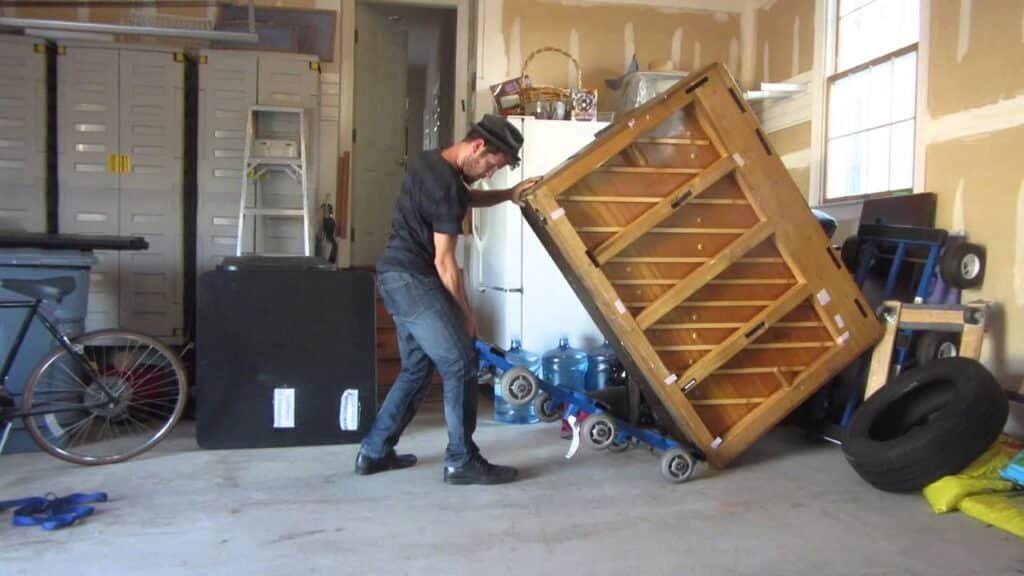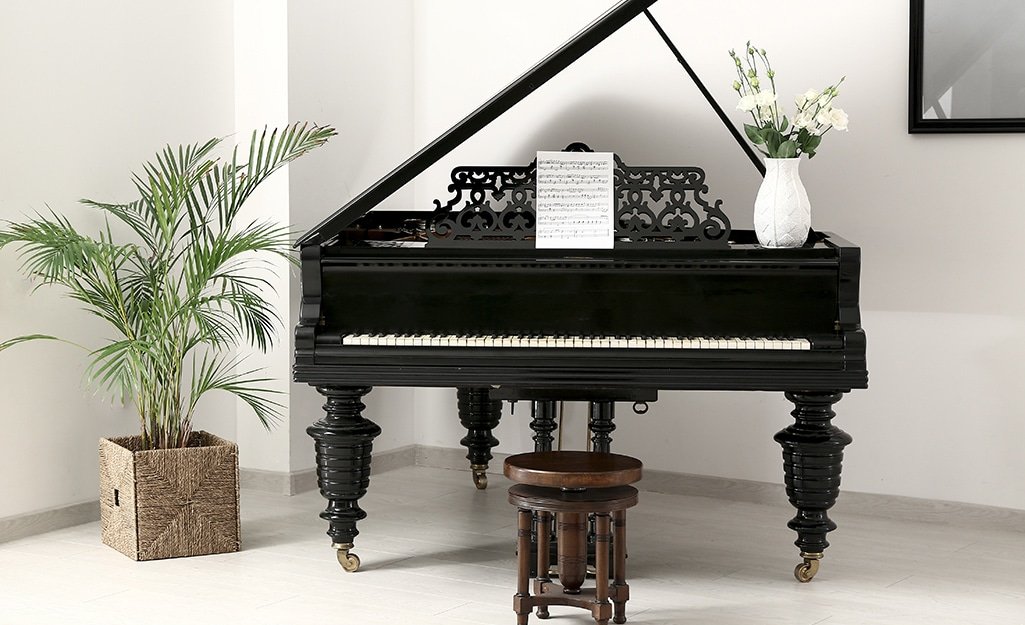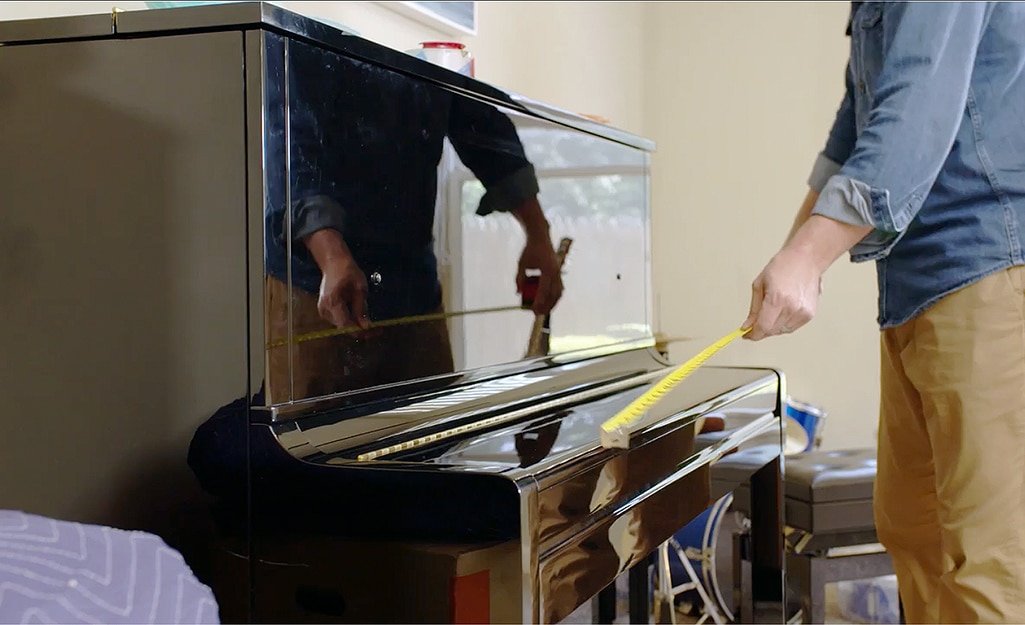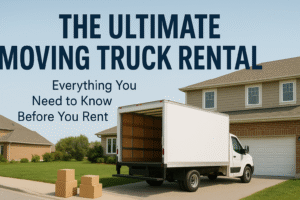Moving a piano is arguably one of the most challenging items to relocate during a household move. These majestic instruments, whether an upright or a grand, are not just heavy – often weighing hundreds of pounds, with some uprights easily surpassing the 500 pound piano mark – but also incredibly delicate, unwieldy, and unevenly weighted. Attempting to move a 500 pound piano (or any piano, for that matter) by yourself is a recipe for disaster, posing severe risks of personal injury, irreparable damage to the instrument, and significant damage to your property.
At Top Town Movers, serving Ontario and especially the North York area, we specialize in the safe and efficient relocation of all types of household goods, including pianos. Our expertise comes from understanding the physics of moving such heavy objects, employing specialized equipment, and deploying trained personnel who know how to navigate tight spaces and awkward angles. This comprehensive guide will explain the professional approach to safely moving a piano, highlighting the equipment, techniques, and why entrusting this task to experts is always the best decision.
- Learn More >>>>Piano Moving
- Learn More >>>>Moving a 600 pounds Steinway Piano Upstairs
How to Safely Move a Piano: Understanding the Professional Approach (and Why DIY is Dangerous for a 500-Pound Piano)
Why You Should NEVER Attempt to Move a 500 Pound Piano By Yourself
Let’s be unequivocally clear: trying to move a 500 pound piano or heavier instrument without professional help is incredibly dangerous.
- Severe Risk of Injury: Pianos can cause crushed fingers, broken bones, severe back injuries, sprains, and even head injuries if they tip or fall. A slip can have catastrophic consequences.
- Irreparable Piano Damage: Pianos are complex instruments. The internal mechanisms (strings, hammers, pedals, soundboard) are extremely sensitive to jarring movements, impacts, or being dropped. Even a slight tilt can throw off its delicate tuning or cause structural damage. The outer finish can easily be scratched, dented, or gouged.
- Property Damage: Pianos can easily gouge floors, scrape walls, break railings, or damage doorways if not handled with precision and care.
- Lack of Proper Equipment: Specialized tools are essential. Without them, you’re relying on brute force, which is inefficient and dangerous.
- Weight Distribution: A piano’s weight is not evenly distributed. The cast-iron frame, which holds the tension of the strings, is incredibly heavy, making the piano top-heavy and prone to tipping if not balanced correctly.
For these critical reasons, Top Town Movers strongly advises against a DIY piano move.
The Professional Approach: How Top Town Movers Safely Moves a Piano
Moving a piano safely requires a combination of planning, specialized equipment, precise techniques, and a coordinated team. Here’s a breakdown of the professional process:
1. Thorough Assessment and Planning
Before any physical movement, our team conducts a detailed assessment:
- Piano Type and Weight: Identifying whether it’s an upright, grand, or spinet, and estimating its weight helps determine the required equipment and personnel. A standard upright can be 300-800 lbs, while a grand piano can exceed 1,000 lbs.
- Route Planning: We meticulously plan the path from its current location to the moving truck, and then from the truck into the new home. This includes:
- Measurements: Doorways, hallways, stairs, landings, turns, and elevator dimensions are precisely measured.
- Obstacle Identification: Recognizing any potential hazards like uneven flooring, loose rugs, steps, narrow turns, or delicate fixtures.
- Protection: Determining what kind of floor runners, wall protection, or door frame padding will be needed.

- Learn More >>>>piano moving in GTA
2. Specialized Equipment
This is where professional movers have a distinct advantage. No amount of muscle can substitute for the right tools.
- Piano Dolly/Skid Board: This is not a standard furniture dolly. A piano dolly (often called a “piano board” or “skid board”) is a heavy-duty, carpeted, flat platform with multiple durable wheels. It allows the piano to be securely strapped down and rolled with stability.
- Heavy-Duty Moving Blankets/Quilted Pads: Thick, padded blankets are crucial for protecting the piano’s finish from scratches, dents, and impacts.
- Heavy-Duty Straps/Ratchet Straps: Strong straps are used to securely fasten the piano to the dolly and later, inside the moving truck.
- Piano Moving Straps/Harnesses: These are specialized straps that loop under the piano and over the shoulders of movers, allowing them to use their leg strength and maintain better balance while lifting or navigating stairs.
- Forearm Forklifts/Shoulder Dollies (for specific lifts): While not for every situation, these can aid in maintaining balance and distributing weight during certain lifts.
- Ramps: Heavy-duty ramps with a low angle of incline are necessary for loading the piano onto the moving truck.
- Hand Trucks/Appliance Dollies (for some uprights): For smaller uprights, a heavy-duty appliance dolly with straps can be used for short, level distances.
3. Protecting the Piano Itself
Before any lifting begins, the piano is thoroughly protected.
- Closing and Locking: The keyboard lid is closed and locked. If there’s no lock, it’s carefully secured with painter’s tape (never duct tape directly on the finish) or a strap to prevent it from opening.
- Pedals and Legs (Grand Pianos): For grand pianos, the legs are usually removed (sometimes by a piano technician beforehand), and the pedal lyre is detached. These parts are then individually wrapped in moving blankets and labeled. The piano is then placed on its side on a specialized piano moving board.
- Padding: The entire piano (upright or grand) is meticulously wrapped in multiple layers of heavy-duty moving blankets, secured tightly with large rolls of shrink wrap or packing tape (applied to the blanket, not the piano’s finish). Special attention is paid to corners, edges, and delicate parts.
- Learn More >>>>piano moving in Etobicoke
4. The Moving Team and Technique
This is where professional training and coordination are indispensable.
- Team Coordination: Pianos are typically moved by a team of at least two to four experienced movers, depending on the piano’s size and the complexity of the move. Each person has a specific role and communicates constantly.
- Lifting and Balancing (Upright Pianos):
- The piano is gently tilted onto its side, allowing the piano dolly to be slid underneath.
- It’s then carefully lowered onto the dolly and secured with straps.
- For stairs, specialized techniques are used, often involving a strong team, piano moving straps, and a solid understanding of leverage and balance. One mover typically leads from the bottom (uphill), guiding and carrying most of the weight, while others support and balance from the top or sides.
- Grand Piano Specifics:
- The grand piano is carefully lifted and laid on its side on a piano board. Its curved side is the bottom.
- It’s then heavily padded and strapped to the board.
- The piano board acts as a skid, allowing it to be safely pushed or carefully slid over protective surfaces.
- Navigating Obstacles:
- Stairs: This is the most challenging aspect. Our movers utilize specialized straps, precise communication, and often a larger team. They move one step at a time, maintaining control and balance.
- Doorways/Corners: Pianos are carefully pivoted and angled through tight spaces, always protecting walls and door frames with padding.
- Loading onto the Truck:
- A heavy-duty ramp is used. The piano, secured to its dolly, is slowly and carefully rolled up the ramp by the team.
- Once inside the truck, it’s positioned securely against a solid wall of the truck, usually at the front, and then heavily strapped to the truck’s tie-down points to prevent any movement during transit. No other items should be placed in a way that could shift and impact the piano.
5. Unloading and Placement
The process is reversed at the destination.
- Careful Unloading: The piano is slowly rolled down the ramp and into the new home.
- Protective Path: Just as on loading, protective floor runners and wall padding are used inside the new home.
- Precise Placement: The piano is maneuvered into its final desired location.
- Unwrapping and Reassembly: Once in place, the protective blankets and straps are removed. For grand pianos, the legs and pedal lyre are reassembled (or a piano technician is called if professional reassembly is needed for tuning/intonation).

- Learn More >>>>piano moving in Burlington
Why Trust Top Town Movers with Your Piano?
Attempting to move a 500 pound piano (or any piano) yourself is simply not worth the immense risk to your health, your home, or your valuable instrument.
At Top Town Movers, serving North York and the greater Ontario region, we offer:
- Experienced Piano Movers: Our teams are specifically trained in the delicate and strenuous art of piano relocation.
- Specialized Equipment: We have all the necessary piano dollies, straps, pads, and ramps to ensure a safe move.
- Insurance and Protection: We provide comprehensive valuation coverage options for your valuable items, giving you peace of mind.
- Efficiency and Safety: Our professional methods are designed to move your piano efficiently while prioritizing safety above all else.
- No Damage Guarantee (to property): We take extreme care to protect your floors, walls, and doorways during the move.
Don’t gamble with your back, your home, or your beloved instrument. When it comes to something as heavy and delicate as a piano, especially one that weighs a 500 pound piano or more, leave it to the professionals. Contact Top Town Movers for a safe, secure, and stress-free piano relocation.

































